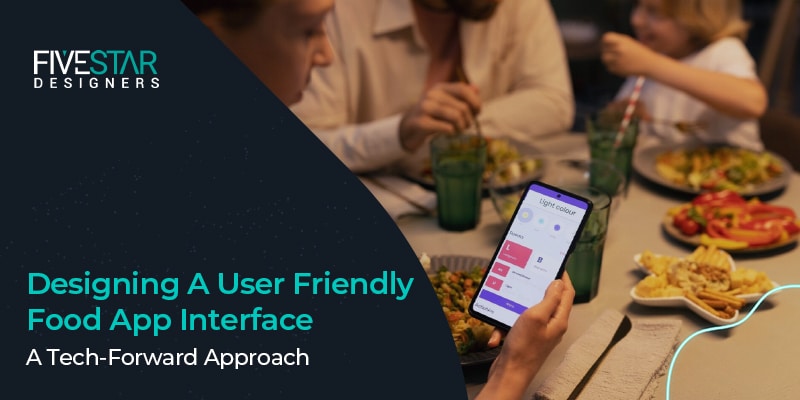In the fast-moving world of mobile app development, especially in the food industry, the user interface (UI) isn’t just about looking good—it’s about creating a seamless user journey. A food app development company thrives on solving user pain points, blending accessibility with cutting-edge tech to keep users engaged. But where do app developers draw the line between simplicity and innovation?
Let’s dive into how to build a UI that delivers utility without unnecessary fluff, focusing on what makes users stick around.
The Anatomy of a Food App Interface:
Designing a food app UI is a lot like plating a dish. Presentation matters, but function dictates the flavor. A create app process here should center around four essential components:
Navigational Framework:
Giving your app a structured, tidy and collected appearance is the way to go rather than slapping everything together with hot glue.
Top-Down Hierarchies:
Think menus over submenus, a clear breadcrumb trail that keeps users oriented.
Microinteractions:
Adding subtle animations when tapping icons or loading pages keeps the app dynamic.
Gestural Controls:
Swipes, pinches, and holds can replace traditional buttons for actions like deleting a saved order or updating preferences.
Visual Hierarchy:
If your app is as bland as a history textbook, no one will enjoy using it. Decorate your app like a Christmas tree with visual stimulants.
Color Psychology:
Red to stimulate appetite, green to indicate fresh options—your color palette communicates more than you think.
Typography Pairing:
Clean, legible sans-serif fonts for readability; bold headers to emphasize key actions like “Order Now.”
Spacing Metrics:
Padding and margins make or break the readability of food categories and promotions.
Interactive Elements:
The more interactive, the more immersive an app is. Interactive functions give your app dimensions and promote a move fun environment.
Dynamic CTAs:
Call-to-action buttons like “Add to Cart” should be prominent, responsive, and color-coded.
Live Previews:
Allow users to see what happens in real time, such as adding toppings on a pizza builder.
Back-End Integration:
Syncing the UI with the backend for real-time inventory, push notifications, and order tracking is essential. Without this, even the most polished interface becomes a frustration factory.
Design Principles That Elevate User Experience:
When you’re in the app development agency game, certain principles are non-negotiable.
Keep It Tap-Friendly:
With thumbs doing all the work, tap zones need to be spacious. Nobody wants to fat-finger the “Remove Item” button when they meant “Checkout.”
Consistency in Components:
Consistency breeds familiarity. Buttons, menus, and layouts should maintain the same style and spacing across screens. Think Material Design guidelines but adapted for your brand’s vibe.
Personalization Without Overwhelm:
Leverage user data to make interfaces smarter. Show recently ordered dishes, suggest pairings, or display dietary filters upfront—but don’t spam.
How App Developers Make It Happen:
Designing food app UIs isn’t about winging it with some templates. App developers tackle this systematically:
Wireframing:
This is where the blueprint happens. Tools like vector grids help create precise layouts for consistent alignment.
Prototyping:
Before writing a single line of code, developers craft interactive prototypes to test flow and usability.
Beta Testing:
Before releasing your app to the public, have a bunch of guys test your app to the limits so any kinks can be ironed out.
Here’s the kicker—iterations. Apps that flaunt their UI integrity and aesthetics undergo heaps of iterations even post-launch.
Avoiding Common Pitfalls in Food App Design:
Whilst multiple features add strength to your app, there’s a fine line between sleek design and just bloating your app with unnecessary features. Here’s what to steer clear of:
Over-Customization:
Too many options for customization tend to be overstimulating and result in loss of usability.
Slow Loading Times:
A visually stunning app means nothing if it lags. No one wants to see that buffering circle of boredom. Optimize those assets!
Generic Icons:
Icons should be instantly recognizable. If users have to guess, you’re doing it wrong.
Why You Need a Food App Development Company:
Partnering with a food app development company means all the technical stuff is handled by experts while you get to sit back and sip on margaritas. Hiring agencies that specialize in that particular niche results in predictable as well as satisfactory results.
When they create app solutions, they’re not charging just for aesthetics but also functionality like API integrations for payment gateways, real-time tracking, and machine learning for personalized recommendations.
Closing Thoughts:
Just like any other type of app, food apps also require UI beautification that is one with the functionality of the app to encompass user attention and promotes an overall pleasant experience.
Bear in mind the next time you set off to design an app’s UI, good design isn’t a roll of the dice but a result of deliberate and intricate choices made by skilled app developers and a reliable app development agency. Keep it clean, fast, and engaging. After all, your users are here for the food, not the friction.



